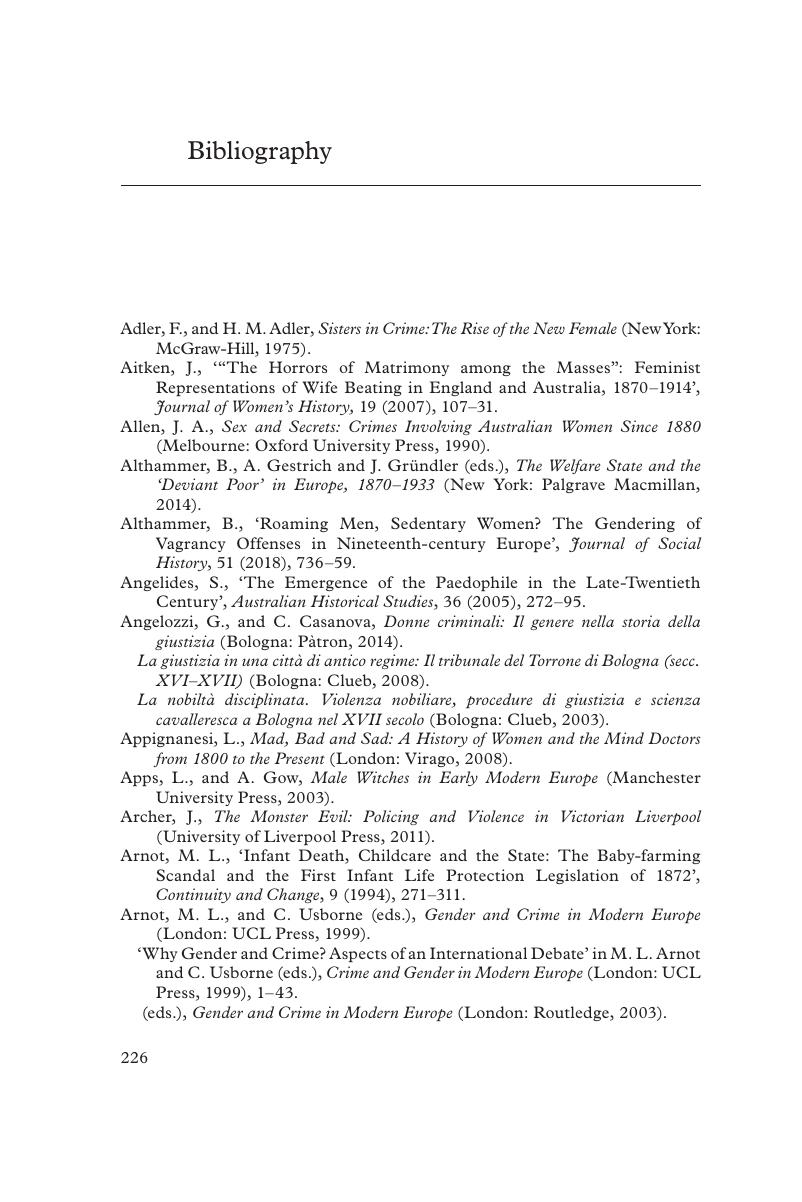Book contents
- Women’s Criminality in Europe, 1600–1914
- Women’s Criminality in Europe, 1600–1914
- Copyright page
- Dedication
- Contents
- Figures and Tables
- Contributors
- 1 Introduction
- 2 Explaining Crime and Gender in Europe between 1600 and 1900
- Part I Violence, Space and Gender
- Part II Prosecution and Punishment
- Part III Representation of Crime
- Bibliography
- Index
- References
Bibliography
Published online by Cambridge University Press: 10 January 2020
- Women’s Criminality in Europe, 1600–1914
- Women’s Criminality in Europe, 1600–1914
- Copyright page
- Dedication
- Contents
- Figures and Tables
- Contributors
- 1 Introduction
- 2 Explaining Crime and Gender in Europe between 1600 and 1900
- Part I Violence, Space and Gender
- Part II Prosecution and Punishment
- Part III Representation of Crime
- Bibliography
- Index
- References
Summary

- Type
- Chapter
- Information
- Women's Criminality in Europe, 1600–1914 , pp. 226 - 254Publisher: Cambridge University PressPrint publication year: 2020



